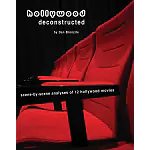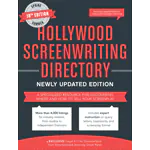Tag: how to write a script
Script Studio® Screenwriting Software App Wins Xojo Design Award
May 1, 2019 (London, UK) – UK technology company Nuvotech is awarded the 2019 Xojo Design Award of “Best Vertical Market App” for its popular creative writing software Script…
Structure Vs Free-Form Script Writing
Screenwriters, novice and pro, will inevitably have their own contrasting methodologies for writing a screenplay and you will often hear conflicting rules to adhere to from prominent screenwriting gurus…
Nuvotech’s Creative Writing Software Now Available from Best Buy and Amazon in Canada
UK technology company Nuvotech today announced the availability of their popular creative writing software Movie Outline 3 and Script It! to Canadian customers through Best Buy's Canadian online store.…
Pacing is Often the Key to a Successful Screenplay
To help you understand story pacing and how to write a script that keeps the reader turning the page it may help to think of your screenplay as a…
The Power of the Flashback
Flashback can be a clever device or it can be an annoying one. If you use it sparingly and don't rely on it too heavily to tell your story…
Formatting is crucial in screenplay writing
When you sit down to create a screenplay, there are many issues you have to bear in mind. Indeed, the process can be daunting. But as long as you…
Screenwriting Myths Debunked
A lot of talented writers make the mistake of giving up on a career in screenwriting before they even get started. Much of this lack of belief stems from…
Getting Started on a Screenplay
Writing a script is a dream for many people. You might be an excellent writer who has come up with an innovative concept, but have no idea where to…
Turn Your Idea into a Saleable Script
If you want to learn how to write a script, you are probably already aware that you will be up against stiff competition in the writing industry. However, while…
Don’t Settle For The Obvious
All too often writers, especially experienced writers, get lazy. They get comfortable in their own writing shoes with their tried and tested screenwriting habits and while this makes knocking…



